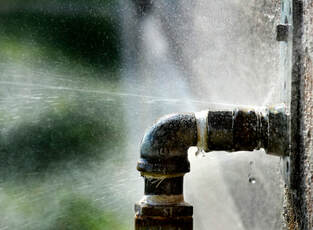6 Ways to Locate Concealed Water Leakages in Your Residence
6 Ways to Locate Concealed Water Leakages in Your Residence
Blog Article
Presented here down the page you might get more brilliant information with regards to Detecting hidden plumbing leaks.

Early detection of leaking water lines can mitigate a possible calamity. Some tiny water leakages may not be visible.
1. Check Out the Water Meter
Every residence has a water meter. Inspecting it is a proven manner in which aids you discover leakages. For beginners, shut off all the water sources. Make certain no person will purge, make use of the tap, shower, run the cleaning equipment or dish washer. From there, go to the meter and watch if it will transform. Considering that no one is using it, there ought to be no activities. That shows a fast-moving leak if it relocates. If you spot no adjustments, wait a hr or two as well as inspect back once again. This suggests you may have a slow-moving leak that could even be underground.
2. Check Water Intake
If you identify abrupt adjustments, regardless of your usage being the exact same, it suggests that you have leaks in your plumbing system. A sudden spike in your costs suggests a fast-moving leak.
A steady rise every month, also with the exact same habits, shows you have a slow leakage that's also gradually escalating. Call a plumber to extensively examine your residential property, particularly if you really feel a warm area on your flooring with piping beneath.
3. Do a Food Coloring Test
When it comes to water intake, 30% comes from toilets. Test to see if they are running appropriately. Drop flecks of food color in the container and also wait 10 mins. There's a leak in between the container and also dish if the color somehow infiltrates your dish during that time without flushing.
4. Asses Outside Lines
Do not fail to remember to check your outdoor water lines also. Ought to water leak out of the link, you have a loosened rubber gasket. One small leak can throw away bunches of water as well as surge your water expense.
5. Analyze the scenario and also evaluate
Home owners need to make it a behavior to examine under the sink counters as well as even inside cabinets for any kind of bad odor or mold and mildew development. These two warnings show a leak so prompt interest is required. Doing regular examinations, also bi-annually, can save you from a major issue.
If you know your residence is already old, keep a watchful eye on your heating systems, hoses, pipes etc. Look for discolorations and also weakening as the majority of pipes and appliances have a life span. They will additionally naturally wear away as a result of damage. Do not wait for it to escalate if you suspect dripping water lines in your plumbing system. Call a professional plumber immediately so you don't wind up with a terrible mess in your house.
Early discovery of leaking water lines can minimize a potential calamity. Some tiny water leakages might not be visible. Examining it is a proven method that aids you discover leaks. One little leakage can squander tons of water and also surge your water expense.
If you believe leaking water lines in your plumbing system, don't wait for it to escalate.
WARNING SIGNS OF WATER LEAKAGE BEHIND THE WALL
PERSISTENT MUSTY ODORS
As water slowly drips from a leaky pipe inside the wall, flooring and sheetrock stay damp and develop an odor similar to wet cardboard. It generates a musty smell that can help you find hidden leaks.
MOLD IN UNUSUAL AREAS
Mold usually grows in wet areas like kitchens, baths and laundry rooms. If you spot the stuff on walls or baseboards in other rooms of the house, it’s a good indicator of undetected water leaks.
STAINS THAT GROW
When mold thrives around a leaky pipe, it sometimes takes hold on the inside surface of the affected wall. A growing stain on otherwise clean sheetrock is often your sign of a hidden plumbing problem.
PEELING OR BUBBLING WALLPAPER / PAINT
This clue is easy to miss in rooms that don’t get much use. When you see wallpaper separating along seams or paint bubbling or flaking off the wall, blame sheetrock that stays wet because of an undetected leak.
BUCKLED CEILINGS AND STAINED FLOORS
If ceilings or floors in bathrooms, kitchens or laundry areas develop structural problems, don’t rule out constant damp inside the walls. Wet sheetrock can affect adjacent framing, flooring and ceilings.
https://www.servicemasterbyzaba.com/blog/how-to-detect-water-leakage-in-walls/

I was made aware of that editorial on Hacks to detect leaks through an associate on a different web address. Don't hesitate to take the time to distribute this page if you appreciated it. I treasure reading our article about Finding hidden leaks.
Report this page